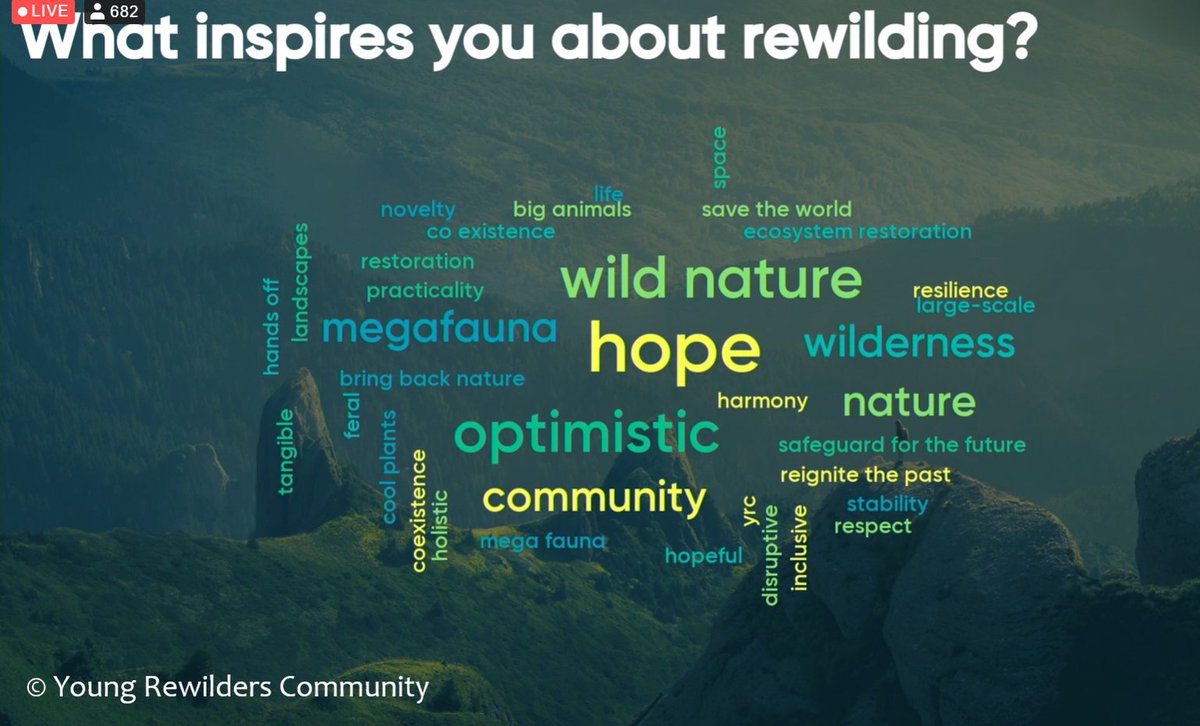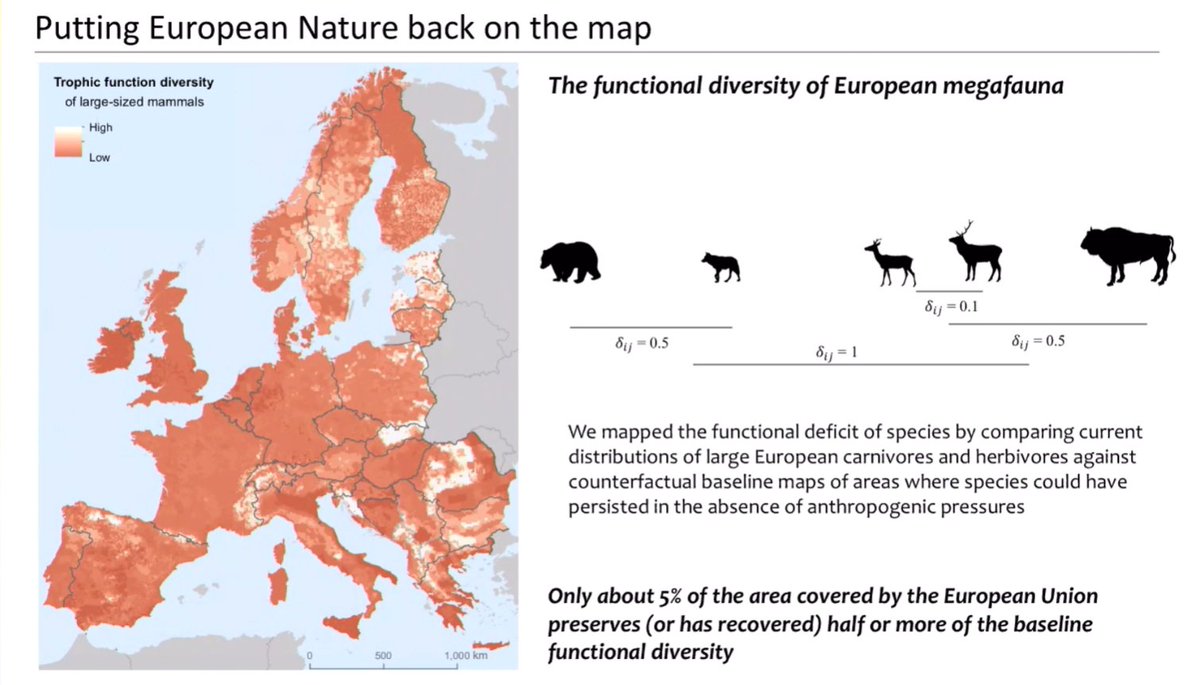
Today we're virtually at the @RewildingEurope #RewildingSymposium and will be bringing you updates throughout the day on the latest science from european landscapes #rewilding
Paul Jepson of ecosulis the first speaker of the day, stating that #rewilding presents a new narrative in conservation fit for the 21st century. There are many actors shaping it, but in particlar its an opportunity for young people to shape and define their future environment
He says the science behind current laws in particular Natura2000 are based on science which is 50 years out of date. We need to redesign laws across Europe based on a new narrative and incorporating modern scientific thinking on rewilding
Next we move onto Frans Schepers - Rewilding European Landscapes. Who starts by highlighting the development and debates in rewilding science and the 'skyrocketing' numbers of publications. However he says most are based on opinion more than practice
Using the example of the Netherlands he points out that what is now called rewilding. Began as 'Nature Development' in the 1980's with projects such as OSV, Plan Stork and Living Rivers. They moved from defensive to offensive approach to nature conservation
Next Frans introduces the state of rural depopulation shown in dark green on this map, causing the collapse of many rural communities. The problem cannot be solved by subsidies and stresses we need new solutions 

This, alongside greater human tolerance are two factors that have led to a wildlife comback across much of mainland Europe. With wildlife in turn becoming more relaxed around people
Frans then moves onto #rewilding and its potential reduce carbon emissions. Which he says make it a strong policy driver as we move forward, however large investments in rewilding, partnerships and research are needed
"The goal of #rewilding is not to restore a painting that then needs curating, it is about restoring a system that can look after itself" Rewilding is about moving landscape along a scale towards reduced management
Frans brings in examples of rewilding in practice stating how rewilding europes projects all have different focuses. From reducing forest fires in Portugal; rewilding-hunting models in Croatia; co-existence corridors in the Apenines and a bison economy in the Carpathians
How do we scale-up rewilding practice? - Frans identified 1) wilder nature, 2) wildlife comebacks, 3) nature-based economies, 4) Interest in the wild, 5) demonstrate rewilding, 6) create enacting policy, 7) connect with private sector and finance, 8) link with science
Frans ends with this word cloud from the young rewilders community. Rewilding and Hope go side by side 

The next talk is by Nestor Fernandez - Mapping rewilding opportunnities in Europe. He starts by highlighting the important role of megafauna due to their cascading effects, veg regulation, sanitation services and seed dispersal
However he points out that as much of 50% of Europe is within 1.5km of transportation infrastructure, creating a landscape dominated by fragmentation
So how do we restore ecosystems? Nestor points us to this figure from the paper 'rewilding complex ecosystems' which theorises the components of landscape integrity and restoration, but currently most landscapes sit within the red zone, limited by infrastructure, HWC and risks 

Nestor presented a series of dramatic maps, which seek to take this theory and map it. There are three sets of map which he provides. Trophic functional diversity, Human control and connectivity. 





These maps are then knitted together to give an overall picture of landscape integrity. This approach allows us to see where opportunnities for restoration are greatest and where barriers to integrity exist through corridor mapping. Showing plenty of scope for restoration 



Nestor stresses the need to take these landscape approaches and make them scalable. Proposing the use of a Rewilding score, based on the ecological integrity and and human forces in any given area.
These approaches have been used to assess unoccupied suitale habitat areas for bears and other large carnivores and herbivores in Europe. For bears they found over 37% of suitable habitat is unoccupied meaning there are major opportunities for population expansion
Nestor finishes by emphasising four key aspects needed for restoration to be achieved. 1) Pursuing ecosystem functions, 2) Ensure science based assessments, 3) Improving connectivity and coherence and 4) take similar approaches into aquatic systems
Its been an informative morning with some interesting presentation at #RewildingSymposium we'll be back later for the afternoon session
• • •
Missing some Tweet in this thread? You can try to
force a refresh











